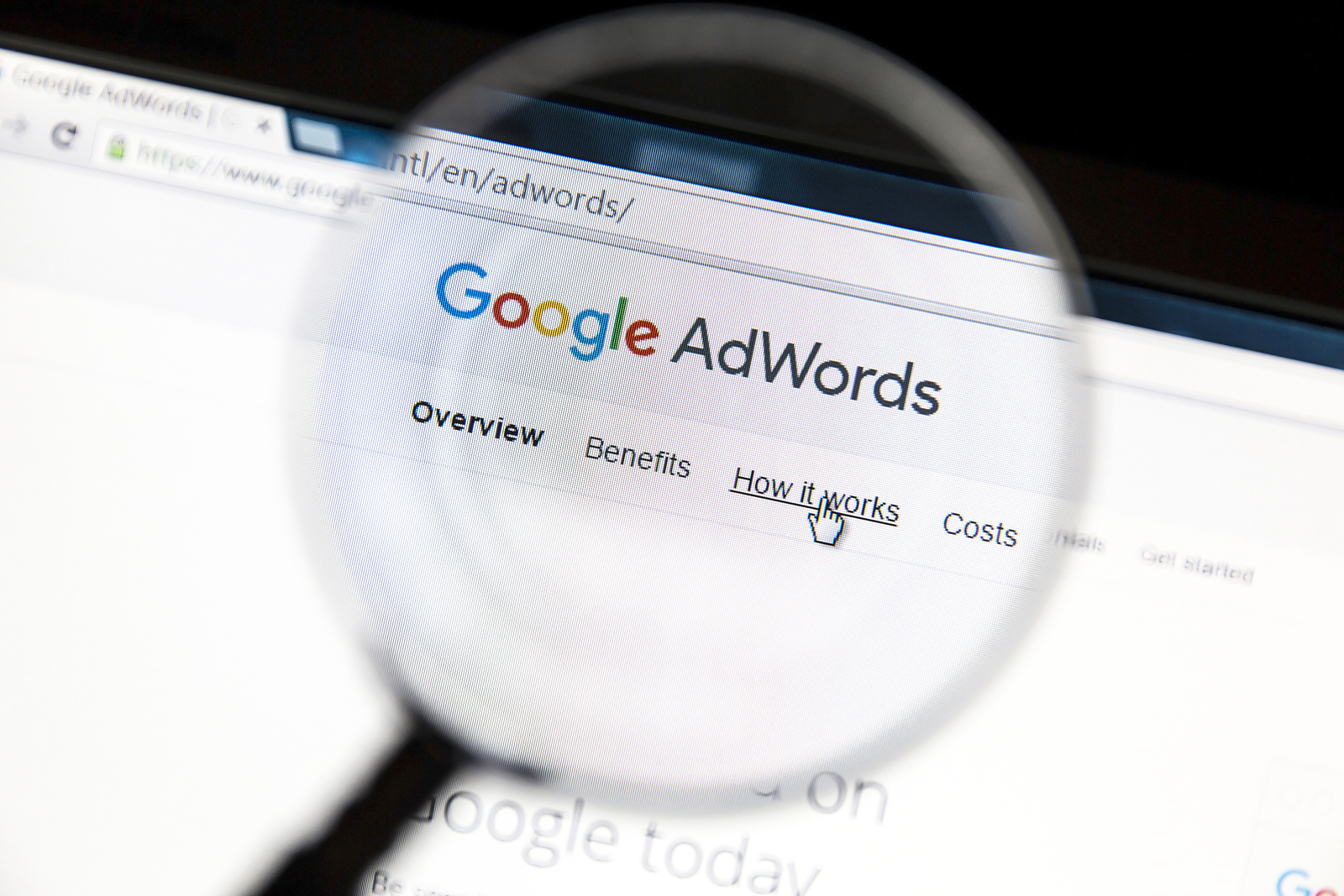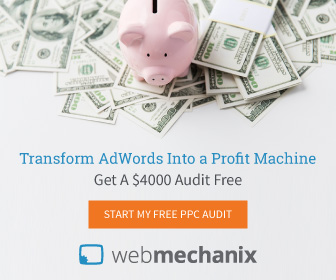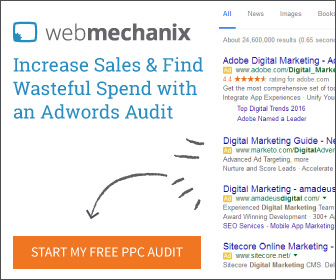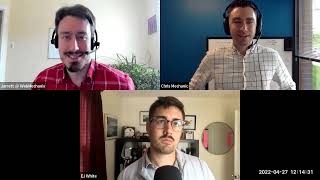
How To Optimize Adwords Campaigns
Have you ever wondered if there could be a better way to optimize your AdWords campaigns?
With all the advice out there on the internet, it can be overwhelming to figure out where to start. And you probably don’t know who you can really trust.
“Are they really giving their top secrets? Or did this company just churn out yet another PPC article?”
And no doubt, you stand to gain a lot from optimizing AdWords. In fact, 55% of B2B marketers say that it’s their most effective paid advertising method.
That’s why, in this article, I’d like to share with you some of our best battle-tested tips. We’ve got our AdWords optimization strategies down to a science through years of trial & error.
Read on and follow these steps to steal some of our best tips and tricks, so you can start tweaking your AdWords campaigns towards a higher ROI.
AdWords Optimization Begins With Alignment

If you get one takeaway from this article, it’s this: Proper AdWords campaign management begins with alignment.
Specific keywords searched should be directly related to the ad copy and landing page.
Any small discrepancy in this sequence can throw users off the “scent” trail to your conversion goal, resulting in fewer leads & sales.
Thus, it’s important to create custom ads and landing pages to match specific keywords.
Have Proper Tracking
The most common mistake we see when we examine accounts is the lack of proper tracking.
Without proper tracking, how are you supposed to know what’s working and what’s not?
Knowing all the numbers is crucial if you want to identify and root out the campaign elements that are draining your budget.
For example, we’ve found accounts that ran non-converting keywords for months. And they didn’t turn them off because they weren’t tracking their converting keywords.
That’s basically throwing your budget down the drain.
Here are two steps you should take to fix this:
- Make sure proper analytics installed so that you can track every crucial campaign metric, from CTR to conversions.
- Find keywords that have never converted and turned a profit for the last 3 months. Either pause them until you can target these terms more effectively or delete them altogether.
One last tip: Make sure you have worked out the lifetime value of your average customer so you know exactly how much you canspend to acquire a new customer. If you haven’t made this calculation, chances are you are either over or under-spending on your campaigns.
Create Highly, Relevant Landing Pages
Inexperienced (or lazy) advertisers often send their ad traffic to one generic homepage.
There are two big reasons why this lowers conversions and wastes money:
- The copy on the web page visitors land on isn’t congruent with what they searched for.
- Unnecessary elements and links on the page distract the reader and lower conversions.
For example, let’s say a pet owner searches for “organic cat food.” But she gets a landing page that shows non-organic cat food. Think she’s going to stick around & search for the “organic” section of the site?
More likely, that prospect is going to close your website & buy from your competitor, who served her a landing page with organic-only cat food options.
Because here’s the harsh truth: People want a specific, unique tailored experience to fit their needs. If it isn’t as convenient as possible for them, they’ll leave and find a competitor who delivers.
Not to mention landing pages that don’t “deliver” tend to have a higher bounce rate. A high bounce rate leads to a lower quality score in AdWords, which lowers ad position and increases how much you pay. It’s a vicious cycle.
The good news? There are plenty of tools that do this for you, so don’t have to create a ton of landing pages yourself. Examples include Unbounce, Instapage & Wishpond.
Among other features, these services automatically change the words in your landing page headlines to match a user’s search query.
Tighten Up Your Ad Groups
Having too many keywords that are not specifically related clustered together in one ad group can lead to a lack of “congruency.” This lowers campaign quality scores, lowers conversion rates & generally makes advertising on Google a lot more expensive.
Instead, aim to have a relatively small number of tightly-themed keywords per ad group. And make sure all the keywords are really related in topic.
For example, let’s say you are a B2B software company. You could have an ad group with keywords about a specific topic like:
- “Automating accounting processes”
- “How to automate accounting”
- “Accounting automation”
Notice how all these keywords are specifically wrapped around the topic of accounting automation.
Move keywords that aren’t specifically related to each other to another ad group. Examples might include:
- “Software for non-profit”
- “Non-profit software”
- “Software for automation”
In this case, you’ll notice that one of these keywords is not like the others. The first two are focused on users searching for software for non-profits. The third is purely focused on automation software. To better target this keyword, you should “peel and stick” this keyword into a new ad group, ideally in a new campaign focused on more general “software automation” terms.
Keeping ad groups organized like this will also help you identify high and low-performing keywords more easily, both by ad group set & individual keyword level.
Improve Your Keyword Targeting
Improving keyword targeting is one of the best ways to uncover new opportunities in AdWords.
To win at the AdWords game, you’ve got to be very intentional and specific in the keywords you initially target. Then, constantly analyze their performance over time to improve or cut losers and double down on your winners.
Here are some specific steps you can take to keep improving your keyword targeting and performance:
Keep Adding Negative Keywords
Imagine this:
You do a Google search for “plastic pink barbecue tongs.” But you get served an ad for red, stainless steel barbecue tongs instead. Are you going to buy what that advertiser is offering? Didn’t think so.
To avoid falling into a similar trap in your own campaigns, you must proactively add negative keywords to avoid showing up for (and paying for) irrelevant searches.
As a quick refresher, negative keywords prevent your ad from showing up whenever users run a search with those terms included.
For instance, if you’re selling B2B eCommerce software, you probably wouldn’t want to pay for the search phrase “free B2C software for eCommerce.”
So you would add “free” and “B2C” into your negative keyword list on AdWords.
Target Keywords With High Commercial Intent
If some of your keywords aren’t converting, it’s possible that they are targeting buyers at the wrong stage of the buying cycle.
To get the best possible returns from your AdWords campaigns, target keywords with high commercial intent. High-intent terms target searchers at a later stage in the buying decision process who are more ready to buy.
You can infer intent based on the user’s query. For example, someone who searched “free info on b2b marketing software” is probably still researching. But a person who searched “b2b marketing software price comparison” is probably looking to buy.
Here’s a handy tip: Google the keyword you’re looking to bid on and look at the search results. Are other advertisers showing up for that term? If yes, that’s a good thing — it means the keyword is probably worth competing on.
If not, you may have discovered a gap in the marketplace… but more likely, it’s not a term you’re going to be making a lot of money off of due to low levels of buyer intent.
Also, go ahead and check the organic search results to observe what kind of sites show up. If your competitors show up, it’s a good sign you should bid. If the results are irrelevant to your offering, your buyers are probably not searching on that keyword.
Bid on Brand Terms
Targeting brand terms (yours, your competitors, and parallel industries) is an often overlooked strategy. Because advertisers often don’t bid on these terms, it can be a cheap way of getting quality traffic — with some caveats.
One thing’s for certain: Bidding on your own brand is a must. You might think you don’t have to since you’re already ranked #1 organically. But bidding on your brand offers 2 distinct benefits: this exact oversight that allows you to poach other people’s brand terms. Don’t make the same mistake for your own brand term.
- Protection from Competitive “Snipers”: Some competitors will try to snipe traffic away from your brand by bidding on your brand terms. While the effectiveness of this tactic is highly variable, you can remove this threat by bidding on your brand to “own” your traffic and prevent it from leaking out to our competitors.
- More Control: Put simply, an ad offers you more control over where you can direct a user to on your website than your organic listings. For instance, if someone searches “Your Brand + Service You Offer,” you can send searchers to a landing page about that particular service versus a regular interior page on your site to improve conversion rates.
If you want to bid on your competitor’s brand terms, do so with caution. Often, searchers are going to click your ad and bounce because they were actually looking for your competitor in the first place. If you’re not careful, you can waste a fair bit of money on this strategy.
One area we’ve found competitor brand bidding to be successful is with brands that are seemingly identical to the consumer. For instance, a consumer that searches for “Mr. Roofer” may be less likely to care about the difference between them and “Roto-Roofer.” Again, test sparingly and creatively if this applies to your business.
Don’t Overlook Low Search Volume Words
Low search volume “long tail” keywords are another often overlooked, low-competition opportunity.
It’s easy to assume that higher volume keywords are more desirable and to put all your eggs in that basket. But often you can find some high-quality keywords for a bargain price with a little bit of deep-dive keyword research.
Don’t expect droves of traffic from these terms. But if add enough of them, you can add a healthy trickle of low-cost conversion sources to your campaign.
Keep A/B Testing… But Do It The Smart Way
What if you could get a few more clicks and leads with a different ad? That small increase could make all the difference in terms of profit.
Many marketers drop the ball when it comes to constantly testing and refining their campaigns. Oftentimes, they aren’t testing anything at all!
The fact is, what works best today might not work tomorrow.
Here are three reasons why:
- Today’s “secret” winning tactics might grow stale as more people discover and apply them.
- Ads that seasoned experts think will flop sometimes end up doing really well. You can never know what to expect until you actually run a test.
- Ads get less effective over time because the audience gets used to seeing them. (This phenomenon is known as “ad fatigue.”)
Rule of thumb: Always have one test ad running against your original “control” ad.
You might want to start off testing a radically different ad to get a high-level view of which direction to go.
Over time, your test ads will look more and more like your control ad except for the one part of the ad you test. This is because you will be narrowing in on the ad variables that are actually driving results.
Let your tests run for a while before deciding on a winner. For ads, aim to test a minimum of 100 clicks each to get a statistically significant sample.
Once you’ve determined a winner, pause the loser and come up with a new variation to test. Then, just keep repeating this process to continually improve your ads over time.
Finally (and counterintuitively) — sometimes, what hasn’t worked in the past might work today. Because preferences change as culture changes.
For example, during the Great Depression, people came up with “Keep Calm and Carry On.” This motivational saying died out until very recently. Similar economic times caused by the Great Recession brought this back.
To capitalize on this principle, keep a close eye on Google Trends to see what terms are rising vs. falling in popularity. If you can get ahead of the curve of how your buyers are searching for your products and services, you can get a healthy jump on more “antiquated” un-hip competitors.
Optimize Your Display Ads
If you haven’t tried out display ads, they might be worth a test.
Because display ads are a highly visual-based advertising medium, they offer lot of room for creativity and opportunities to stand out from the competition.
For instance, we’ve found it’s very helpful to use a visual representation of a button in an ad. Here’s an example from our own ads:

Even though you can click anywhere on the ad to go to the page, the button seems to improve the click through rate. Viewers seem to be more inclined to click when there’s a button.
To further boost your clickthrough rates, try having some sort of “directional cue” pointing to the button — whether it be an arrow, a person or even an object.
In the ad shown above, notice how the pig is “looking” at the button to draw attention to it. In another one of our ads show below, we literally have an arrow pointing at the button:

Try using “evocative” verbs, adjectives, and nouns to incite emotion in the reader. At WebMechanix, we have an extensive list of power words to reference so we don’t end up using generic words.
Examples of power words include “Audit-Proof”, “Deadly-Rage”, “Rip” and “Coax.” As you can tell, these can be more evocative than “cool”, “increase”, or “get.”
There are multiple ways of positioning your ad to make it more appealing. Highlight the single greatest benefit you provide your prospect in the text of your ad. Here are a few time-tested benefits to get you started:
- A great price
- A limited time offer
- Free shipping
- Free returns
- Fast shipping
- Official or certified products
- Great selections
- Beginner-friendly
You can get creative with your ad testing. Try having an attractive girl look at the button. Try using eye-catching colors. Test the same ad with a different power verb. Display ads offer much more flexibility for testing than text ads, so do test these ads early and often.
Compare With Your Competitors
One trick you can use when first breaking into an AdWords auction is to “ethically steal” and get inspiration from your competitors’ ads.
For instance, you can look for common words or themes among the best-performing competitor ads and test those in your own ads.
You can also use a tool like Spyfu to see if you’re paying more on a CPC basis for a keyword. If you are, improve your quality score and you could end up paying less. You can do this by improving keyword to ad to landing page alignment.
Define a Campaign Goal
It’s hard to track to see if you’re making progress if you don’t have a clear, specific, and realistic goal.
Decide ahead of time what you want to accomplish with your AdWords campaign. Do you want quality leads? Do you want purchases? What price are you willing to pay for each? How many would satisfy you?
These are questions you should ask yourself both before you launch a campaign as well as on an ongoing basis as your campaign matures and evolves.
Conclusion
Maximizing the effectiveness of AdWords doesn’t have to be overwhelmingly complicated.
You can easily manage and improve your AdWords performance if you follow the 9 simple steps below:
- Install proper tracking and analyze results.
- Improve your keyword targeting.
- Tighten up your ad groups.
- Increase congruency across keywords, ads, and landing pages
- Tweak your ad and landing page copy to improve conversions and CTR.
- Keep A/B testing to find winners.
- Optimize your display ads.
- Set clear goals so you know what to track.
- Compare ads with competitors.
(Want us to do the work for you so you can get more leads at a lower cost? Check out our free Adwords audit,a $4000 Value.)
What’s the biggest thing you’re struggling with in optimizing your AdWords campaigns? Anything you’ve found to be particularly effective for you? Let us know in the comments below.
Most newsletters suck...
So while we technically have to call this a daily newsletter so people know what it is, it's anything but.
You won't find any 'industry standards' or 'guru best practices' here - only the real stuff that actually moves the needle.






